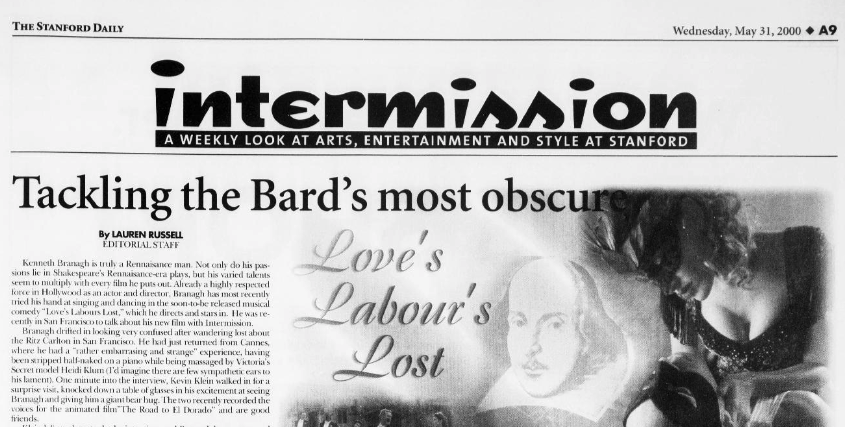Over the past 50 years, The Stanford Daily hosted a number of minutely different sections that each claimed to have a finger on the Bay Area’s cultural pulse: “Entertainment,” “Arts & Entertainment,” “Intermission.” Today we call it Arts & Life.
The commonality between all of these sections is the strong commitment to reporting and reviewing art at Stanford and beyond. Though the nature of our coverage has changed over time — as you can see with Greta Reich’s ’26 history of art reviews — the principles that guide our section remain steadfast. In particular, we strive to support artists, provide meaningful reviews to those who need them and report truthfully on events and stories in the arts. This letter argues that The Daily’s independence from Stanford is critical to the Arts & Life section’s integrity.
Arts & Life treads precariously between reporting (factual, informative news) and reviewing (opinion pieces). This flexibility is both our strength and our weakness; a blurring of the two sides is the reason we began attaching this editor’s note to the end of every review:
“Editor’s Note: This article is a review and includes subjective thoughts, opinions and critiques.“
As art critics, our job is slightly oxymoronic: we strive for the impossible goal of unbiased subjectivity. Art reviews become meaningless when their authors are swayed by the opinions of the artist, so we do our best to keep writers away from any conflicts of interest. Think of how your best friend (or worst enemy) would write about your band’s concert, or how you might review your art professor’s show, knowing they control your grade.
Here, we can also address our section’s tendency toward positive reviews. Our recent conversation with Chicago Tribune critic Lori Waxman revealed this concise piece of wisdom: “never punch down.” As a college newspaper, we stand closer to smaller artists than most publications; still, our goal is always to support and uplift artists in their pursuits. And with so much art being made, it’s impossible to cover the good and the bad wholly!
When the production becomes organizational, however, we feel justified in leveling criticism. Institutions need real critique for change to occur, even if that change is purely artistic.
We focus our critiques on artworks only instead of their respective institutions. We distinguish ourselves from the Opinions section in that we seek to shed light on the quality of the art being produced in an unbiased manner, steering clear of personalized opinions on institutions and artists.
On the other hand — as arts journalists — we have the same duties as news reporters: seek and verify the truth, treat sources with empathy and report stories with our best judgment. The value of independence is immeasurable in this regard. If a student artist misrepresents their performance or work, we fact check them; if an arts organization has a problematic history, we provide that essential context. And if an art department suffers a scandal, we need to report independently of the University’s desired outcome — important coverage cannot be achieved if its subject controls what gets printed. We will pursue the truth to the best of our ability, regardless of the personal feelings of our subjects.
We do not always meet these ideals. Arts & Life is comprised of human editors and writers, many of whom are new to journalism. Mistakes are made: we make factual and copy corrections if needed. But we stand by the content of our reviews and reporting because, as part of an independent publication, we have the right and responsibility to defend our voice.
By the same token, our section can also provide a point of entry to the myriad sectors of the local art scene. We aim to make it a site for learning about the craft of writing, but also the rich histories behind each artist, work and genre that we cover. Visibility is an instrumental effect of journalism. As a media publication, The Stanford Daily has the power to guide the local public eye. By building conversation around the independent creative innovation that populates the Bay Area, Arts & Life plays a role in pulling together the threads of our local art scene.
Stanford is an epicenter of artistic talent, from slam poets to ceramicists to contemporary electronica composers and everything in between. Admittedly, Arts & Life does not currently have the capacity to reach every corner of every scene; we acknowledge this limitation as one of our greatest shortcomings. While conversations around diversity, equity and inclusion remain at the center of our editorial meetings, we ask you — the artists and art lovers — to be vocal when our section is not fulfilling its mission. And, if you have the time, we ask you to join us in helping to realize this mission.
And, critically, we ask you to hold us to the benchmarks we’ve outlined here. It would be unfair to rely on readers for accountability, but we want to be a section that serves the arts community, not a section that uses it. We will continue to inform you of the latest in Stanford’s culture; in return, we hope you understand the importance of what we do and the standards required therein.
Peyton Lee ’24 and Aditeya Shukla ’23 were the Volume 262 managing editors of Arts & Life. Linda Liu ’25 and Sofia Gonzalez-Rodriguez ’25 are the section’s current editors.
